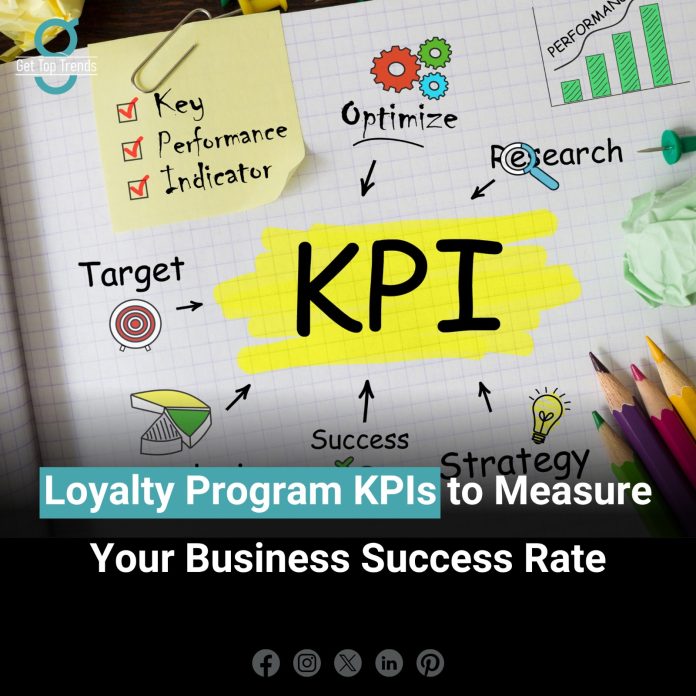Overview of Loyalty Programs
Loyalty programs are smart marketing tactics. They push buyers to keep using certain business services. Each program has unique benefits and loyalty program KPIs to measure your business success rate. They promise points, discounts, and exclusive offers to enhance customer engagement and foster long-term loyalty.
Importance of Measuring Success
Businesses must measure the success of their loyalty programs to maximize return on investment, evaluate the effectiveness of their strategies, and maximize customer retention. Without appropriate evaluation, businesses risk missing opportunities for improvement by being unable to effectively assess the impact of their loyalty initiatives.
This article offers a thorough overview of the key performance indicators (KPIs) required to assess the effectiveness of loyalty programs. To assist organizations in optimizing their loyalty initiatives, it will cover both essential and complex KPIs, techniques for measuring and analyzing these indicators, and industry leaders’ insights.
Key Performance Indicators (KPIs) Overview
Definition of KPIs
Think of Key Performance Indicators (KPIs) as a scoreboard. They show how well a business is scoring on its major goals. When we look at rewards programs, KPIs tell us how effective they are in retaining customers and driving business growth.
Why KPIs Matter in Loyalty Programs
Loyalty programs rely heavily on KPIs—these handy figures offer a numerical look into how customers interact with a business. By carefully examining this data, companies can pick out areas that need a little boost. These informed decisions can then ramp up the program’s success, making customers even happier.
Common KPIs in Loyalty Programs
Here are some key loyalty program KPIs to measure your business success rate
Member Acquisition Rate
It counts the number of new customers joining your loyalty scheme. If many newcomers are hopping on board, your loyalty program seems to be working and is pretty appealing.
Customer Retention Rate
This KPI calculates the proportion of clients who continue with your company for a specific time. An effective loyalty program will have minimal churn and a high retention rate.
Repeat Purchase Rate
It indicates how frequently clients who have already bought once come back to buy again. A climb in the recurrence of purchases shows that your program is successfully urging customers to make repeated purchases.
Average Order Value (AOV) of Loyalty Program Members
It demonstrates the average amount loyalty program members spend per transaction compared to non-members. A higher AOV for members indicates they are paying greater sums as a result of the program’s incentives.
Redemption Rate
This determines the percentage of rewards that consumers use. A high redemption rate demonstrates that clients are encouraged to participate in the program and that your rewards are worthwhile.
Customer Lifetime Value
This indicator analyzes a customer’s overall anticipated lifetime worth with your company in terms of money spent. Encouraging client loyalty can greatly increase the CLV of a loyalty program.
Incremental Margin
This KPI displays the extra revenue made from sales to customers who are members of loyalty programs compared to those who are not. It aids in evaluating the program’s immediate impact on revenue.
Conclusion
To sum up, loyalty programs are vital strategies for encouraging client retention and engagement. Businesses need to use a variety of loyalty KPIs to determine how successful they are, including Customer Lifetime Value (CLV), Redemption Rate, Average Order Value (AOV), Member Acquisition Rate, Customer Retention Rate, and Incremental Margin. These metrics give businesses insightful information about program efficacy and consumer behavior, empowering them to improve loyalty strategies and make well-informed decisions. Businesses may enhance customer happiness, boost income, and guarantee long-term success by tracking and refining key KPIs consistently.
FAQs
1. What are the most important KPIs for a loyalty program?
The most important KPIs for a loyalty program include Member Acquisition Rate, Customer Retention Rate, Repeat Purchase Rate, Average Order Value (AOV), Redemption Rate, Customer Lifetime Value (CLV), and Incremental Margin. These metrics help in evaluating the effectiveness and impact of the program on customer loyalty and business growth.
2. How can businesses improve their loyalty program KPIs?
Improvements can happen by giving personal gifts, keeping customers involved with frequent chats, listening to their suggestions, and tweaking the program with facts. Fresh ideas and smooth customer experiences matter too.
3. Why is Customer Retention Rate important in loyalty programs?
The Keep Retention shows how many customers return to shop for a set time. High return rates show that the rewards make customers stick around, lower drops, and grow lasting ties. This is cheaper than finding new buyers.
4. What does a high Redemption Rate indicate about a loyalty program?
High Redemption Rates tell us that customers see reward value and engage in the loyalty system. It proves the prizes we offer lead to more customer activity and loyalty.
5. How is Customer Lifetime Value (CLV) useful in evaluating loyalty programs?
Customer Lifetime Value (CLV), which calculates the entire revenue a company might anticipate from a single customer account over the course of their relationship, is helpful in assessing loyalty programs. Businesses can improve their plans to achieve long-term profitability and client loyalty by comprehending and growing CLV.


